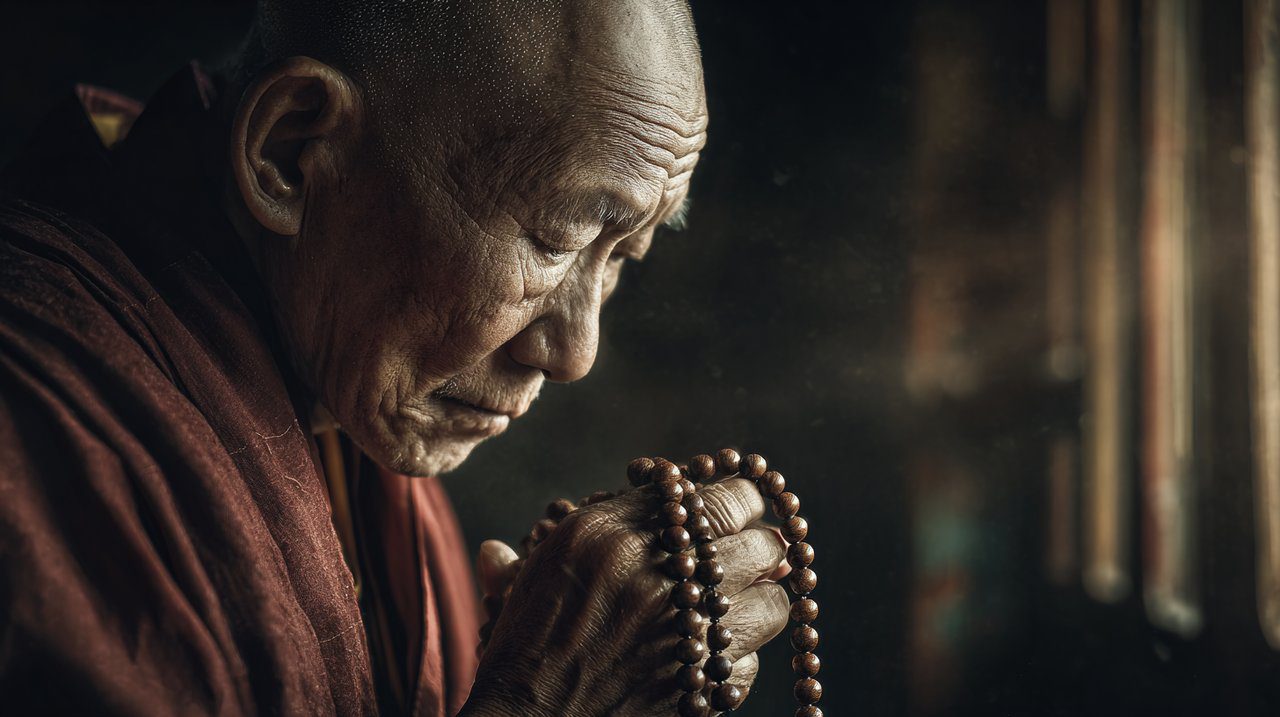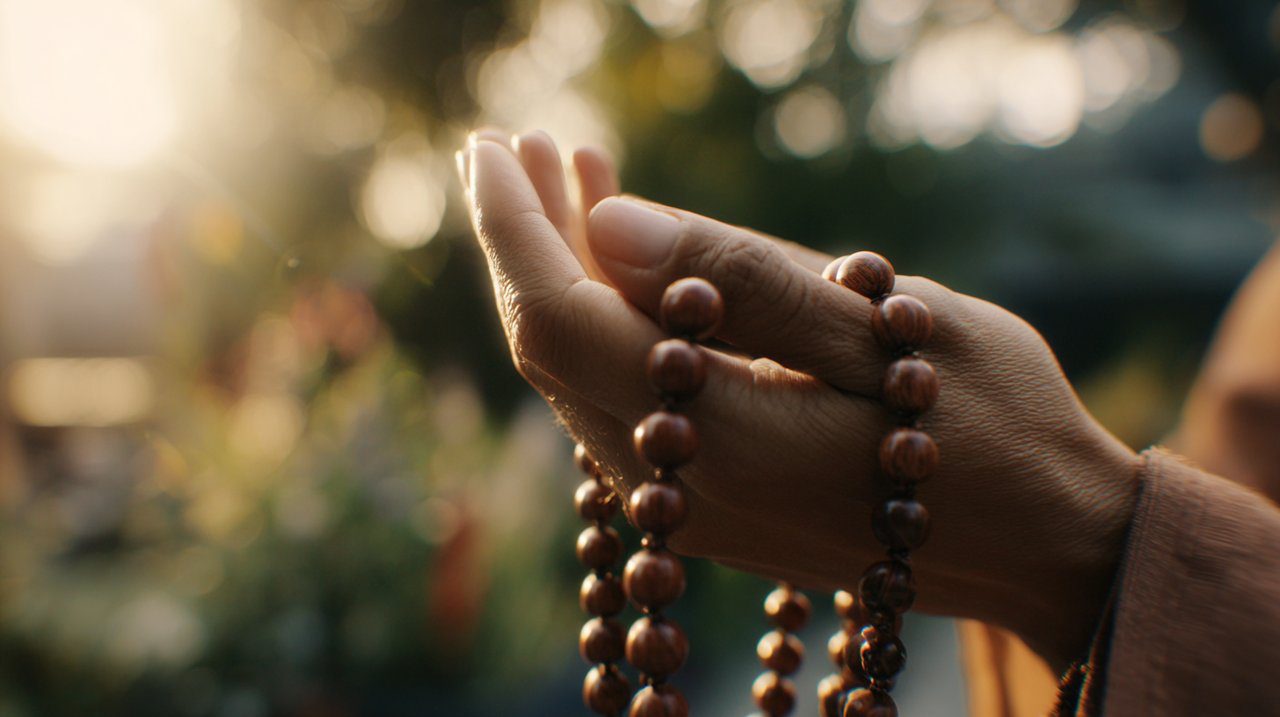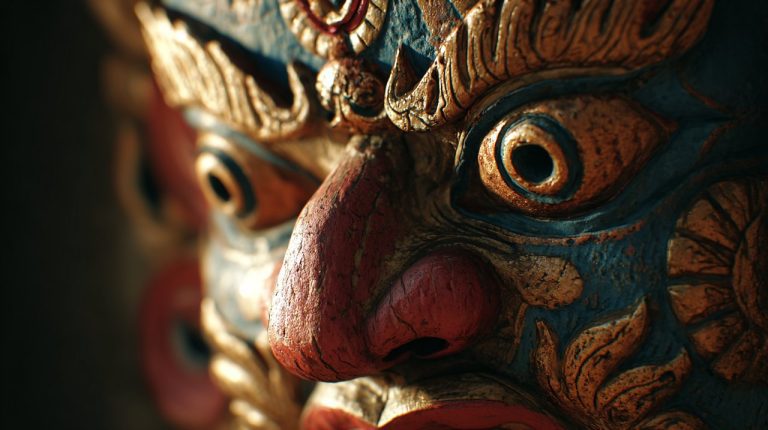Buddha Chain: Understanding Its Meaning, Benefits, and Proper Wear
While many objects serve as adornments, some possess an intrinsic resonance that elevates them beyond mere aesthetics, functioning as tangible anchors in spiritual exploration. The Buddha Chain exemplifies this distinction, inviting a deeper inquiry into its purpose.
My initial encounter with this profound difference occurred during a journey to Bhutan. An elderly monk, his hands shaped by devotion, meticulously strung wooden beads, a process that revealed not just craftsmanship, but a meditative practice inherently woven into each knot. The simple string of beads he presented—a Buddha Chain—was not merely a gift; it was an invitation to perceive beyond physical form. Observing his focused presence and the generations of wisdom reflected in his gaze, it became evident that such a chain operates on a plane far removed from conventional ornamentation, serving as a conduit to deeper spiritual truths.

Buddha Chain: Origins and Core Significance
A Buddha Chain transcends the category of a simple accessory. It functions as a focused spiritual instrument, a tangible symbol worn with intention to cultivate a deeper alignment with fundamental spiritual principles. Understanding its origins and the nuanced meanings embedded within each design is crucial for appreciating its intrinsic value and enduring relevance as a spiritual adornment. This foundational understanding is key to grasping the full significance of these pieces. Buddha Necklace Meaning: A Guide to Ancient Wisdom in Modern Adornment
Ancient Roots and Cultural Presence
The lineage of prayer beads, commonly known as mala beads, forms the foundational inspiration for the modern Buddha Chain, a tradition spanning millennia. Their presence extends beyond a single faith, serving as pivotal tactile aids across various spiritual practices—from Buddhism and Hinduism to Christianity—each tradition utilizing them for focused meditation and prayer.
Within Buddhist cultures, the Buddha Chain consistently serves as a tangible, ever-present reminder of the deliberate path towards awakening and enlightenment. This cultural integration is often reflected in the intricate craftsmanship of Tibetan jewelry, where spiritual meaning is embedded in every detail.
The creation of these chains, frequently a meticulous handcraft, transcends mere assembly. It embodies a deliberate cultivation of mindfulness and devotion, a spiritual legacy transmitted through generations of artisans. The deep care invested in each piece, from the selection of sacred bodhi mala wood to intricate carvings, reflects how material choices inherently carry distinct energetic signatures and narratives, establishing a direct conduit between the wearer and a rich spiritual lineage.
Meaning as a Spiritual Symbol
Beyond its aesthetic appeal, the intrinsic meaning of a Buddha Chain aligns with the foundational tenets of Buddhist philosophy. It serves as a potent symbol of the Buddha’s enlightened mind, encapsulating vital qualities such as:
- Compassion (Karuna): A reminder to act with kindness towards oneself and others.
- Wisdom (Prajna): Encouraging introspection and the pursuit of truth.
- Protection: Believed to foster inner resilience and positive energy.
- Mindfulness: A tangible anchor to bring one’s awareness back to the present moment.
The consistent presence of a Buddha Chain functions as a silent, yet unwavering, commitment. It serves as a constant, tangible vow to integrate these principles into one’s actions and perceptions, a gentle reminder of core values amidst the complexities of everyday life. This makes it a profound spiritual necklace for many.
Beyond Adornment: Spiritual Benefits and Protection
The efficacy of a Buddha Chain extends beyond its material composition. It operates as a consistent spiritual anchor, functioning not merely as an external object, but as a deliberate conduit for internal transformation and a source of quiet, enduring resilience.

A Reminder of Inner Peace
In contemporary life, where constant demands often disrupt inner equilibrium, cultivating moments of stillness can be a deliberate challenge. The conscious touch of a Buddha Chain during moments of mental agitation or external pressure can immediately facilitate re-centering, guiding one’s focus back to a state of calm. This effect is not passive, but an active engagement with the symbol’s intended purpose.
It serves as a physical cue, a deliberate prompt for mindfulness—an invitation to pause, breathe deeply, and reconnect with one’s inner landscape. This tangible connection reinforces the understanding that inner peace, rather than being an external pursuit, remains an always accessible state of being.
Spiritual Shielding and Guidance
Many perceive the Buddha Chain as a source of spiritual protection. This perception is not rooted in superstition, but in its capacity to foster an internal sense of resilience and boundary-setting. It functions by subtly influencing the wearer’s mindset, encouraging positive energy and a conscious detachment from detrimental influences. This mechanism is analogous to the psychological anchoring provided by protective jewelry or certain stones and crystals, which are also often utilized for spiritual well-being, much like the traditional symbolism of an evil eye in other cultures.
It is crucial to differentiate this from a simplistic magical charm. Instead, the Buddha Chain serves as a symbol that actively encourages the wearer to cultivate inner resilience and discernment. Its presence offers a subtle yet consistent sense of security, functioning as a constant reminder that actions and thoughts are guided by the principles of compassion and wisdom one endeavors to embody daily. This makes it a tangible expression of a personal commitment to a structured, ethical path.
Given these intrinsic benefits—from fostering inner peace to cultivating spiritual resilience—the selection of a Buddha Chain becomes a deliberate act, a conscious step towards aligning with these principles. It is not merely a purchase, but an intentional choice reflecting one’s spiritual aspirations.
Seeking and Wearing: Choosing Your Buddha Chain
The selection of a Buddha Chain represents a profoundly personal discernment, demanding an intrinsic resonance with one’s spirit and intentions. It transcends superficial aesthetics, aiming instead to identify a piece that communicates on a spiritual level. A comprehensive understanding of the deeper meanings inherent in specific materials and symbolic representations can significantly deepen this connection.
Considerations for Selection
When approaching the selection of a Buddha Chain, a thoughtful, intentional methodology is paramount. The following factors are crucial in this discerning process:
- Material Composition: Each material possesses distinct energetic properties, often rooted in its natural origin or cultural association. For example, sandalwood, derived from a sacred tree, is traditionally associated with calming properties and mental clarity due to its aromatic qualities and historical use in meditation. Rudraksha beads, seeds from a specific tree, are revered for their perceived protective qualities and ability to stabilize energy, often linked to ancient spiritual practices. Similarly, various crystals are chosen for their specific vibrational frequencies, believed to amplify particular intentions or emotional states. These diverse origins, whether from a Tibetan bracelet crafted from local volcanic stone or ancient seeds, underscore how each element embodies the distinct energetic signature of its source.
- Symbolic Depiction: The specific iconography of the Buddha—whether it is a serenely meditating Buddha, a jovial Laughing Buddha, or another form—carries distinct layers of meaning. A meditating Buddha, for instance, often symbolizes inner peace, self-discipline, and the pursuit of enlightenment through contemplation. In contrast, the Laughing Buddha, or Hotei, embodies abundance, joy, and good fortune. Understanding these nuanced distinctions is crucial, as it allows for the selection of a piece that genuinely resonates with one’s personal aspirations and specific spiritual emphasis.
- Craftsmanship and Authenticity: Prioritizing pieces crafted with integrity and profound intention is essential. Recognizing that artisans are respected and ethically compensated ensures that the item carries an inherent positive resonance from its genesis, fostering a more authentic and powerful connection for the wearer. This attention to provenance is vital.

Proper Wear and Care
Once a Buddha Chain has been selected, treating it with reverence is paramount. It transcends the category of conventional fashion jewelry, functioning instead as a sacred object. The following practices are consistently recommended for its care and mindful interaction:
- Respectful Placement: When not worn, place your chain in a clean, elevated spot, perhaps on a personal altar or in a dedicated pouch.
- Cleansing: Periodically cleanse your chain, whether through exposure to moonlight, the practice of smudging with sacred herbs, or simply by holding it with clear, focused intention. This ritual serves to symbolically purify its energetic field and reinforce its perceived protective attributes.
- Mindful Interaction: Wear it with intention. Let it be a constant reminder of your spiritual path and the qualities you wish to cultivate.
Walking with the Buddha Chain: A Journey to Inner Wisdom
Ultimately, the Buddha Chain functions as a deliberate companion in the process of personal spiritual evolution. It is a focused instrument designed to offer support, provide reminders, and inspire, thereby cultivating a deeper connection with the innate wisdom inherent within each individual.
Integrating Wisdom into Daily Life
The Buddha Chain can become an integral element within one’s daily spiritual practice. It provides a tangible, tactile anchor, prompting pauses, conscious breathing, and actions rooted in cultivated compassion and heightened awareness.
Whether navigating a dynamic urban environment or engaging in quiet meditation, its subtle presence consistently encourages an embodiment of the wisdom it represents. It acts as a gentle yet potent influence, guiding thoughts and actions towards a state of greater harmony and internal equilibrium.
A Path to Deeper Connection
The wearing of a Buddha Chain also extends an invitation to connect with a broader, global community of spiritual seekers. It functions as a silent acknowledgment of shared values and a collective commitment to the journey toward enlightenment.
Through the conscious embrace of these symbols, we establish connections not only with ancient wisdom but also with fellow travelers on this shared path. It serves as a consistent reminder of our interconnectedness and our collective pursuit of peace and understanding.
Integrating a Buddha Chain into one’s life represents a deliberate embrace of personal spiritual aspirations. It signifies a conscious commitment, provides a consistent source of inner support, and offers a steady, guiding presence. This journey, ultimately, centers on identifying what genuinely aligns with an individual’s spiritual trajectory and how such a tangible artifact can facilitate that alignment.
💡 Frequently Asked Questions
A Buddha Chain is more than an accessory; it is a profound spiritual tool and symbol, often drawing inspiration from ancient prayer beads (malas). It serves to deepen one's connection to spiritual principles and acts as a tactile aid for meditation and prayer.
It primarily symbolizes the enlightened mind of the Buddha, representing qualities such as compassion (Karuna), wisdom (Prajna), protection (believed to ward off negative energies and bring good fortune), and mindfulness (a tangible anchor for present moment awareness).
The Buddha Chain acts as a constant spiritual anchor, helping the wearer find stillness and inner peace during stressful moments. It is also believed to provide spiritual protection by creating a protective aura, shielding from negative influences, and promoting positive energy.
Choosing a Buddha Chain is a personal journey. Key considerations include the material (as different materials carry unique energies), the specific symbolism of the Buddha image, and the craftsmanship and authenticity of the piece, ensuring it resonates with one's spirit and intentions.
A Buddha Chain should be treated with reverence as a sacred object. This involves respectful placement when not worn (e.g., on an altar), periodic cleansing (e.g., through moonlight or smudging to purify its energy), and mindful interaction, wearing it with intention as a reminder of one's spiritual path.







